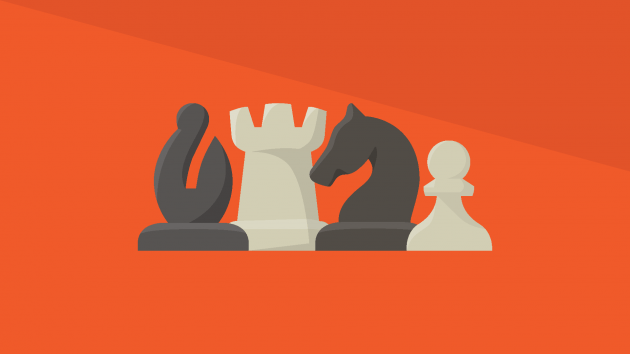
Chess Piece Value
Chess piece values indicate the value of the different chess pieces and how they relate to each other. Every piece has different strengths and weaknesses, so they are valued differently. Let's dive in and see what the chess pieces are worth!
Here is what you need to know about piece values:
What Are Chess Piece Values?
Chess piece values give us a relative worth for each piece. This information helps us determine what piece should be traded for another piece, how we evaluate an exchange, and even how computer engines evaluate a position!
These point values don't determine who wins a game (the goal of chess is to deliver checkmate, not to capture the most pieces). However, chess piece values give us a good idea of which player is better or winning, or if the position is level.
Chess Piece Values
As mentioned, each piece has a different value. It should come as no surprise that the piece values are directly tied to a piece's strength. A pawn is worth one point, a knight or bishop is worth three points, a rook is worth five points and a queen is worth nine points.
The king is the only piece that doesn't have a point value. This is because the king cannot be captured (an attacked king is in check), and also because checkmating the king is the true goal of any chess game.
| Piece | Value |
| Pawn | 1 |
| Knight | 3 |
| Bishop | 3 |
| Rook | 5 |
| Queen | 9 |
Engine Evaluations
Engines give evaluations based on a numerical assignment. These evaluations are directly correlated to chess piece values! For example, a +1 evaluation means that White is ahead one point (the value of a pawn) while a -1 evaluation translates to Black being ahead one point. If a computer engine evaluates a position as +5, then White is leading by the value of a rook!
Engines often give an evaluation with a decimal, like -1.5. This should be interpreted as Black being ahead by one and a half pawns.
Exchange Tests
Exchanging pieces can be tricky! Equal exchanges, like trading a pawn for a pawn or a queen for a queen, are ok when it comes to piece values—but what about a queen for two rooks? Well, a queen is worth nine points, and two rooks are worth ten points! In some cases a queen is better than two rooks, but these situations are rare.
A common exchange is trading two minor pieces (knights or bishops) for a rook and a pawn. Even though this is trading six points for six points, it does not necessarily make the exchange equal! The other factors of the position must be taken into consideration. In the following position, Black has made the common error of trading a knight and bishop for White's rook and f-pawn with Nxf2.
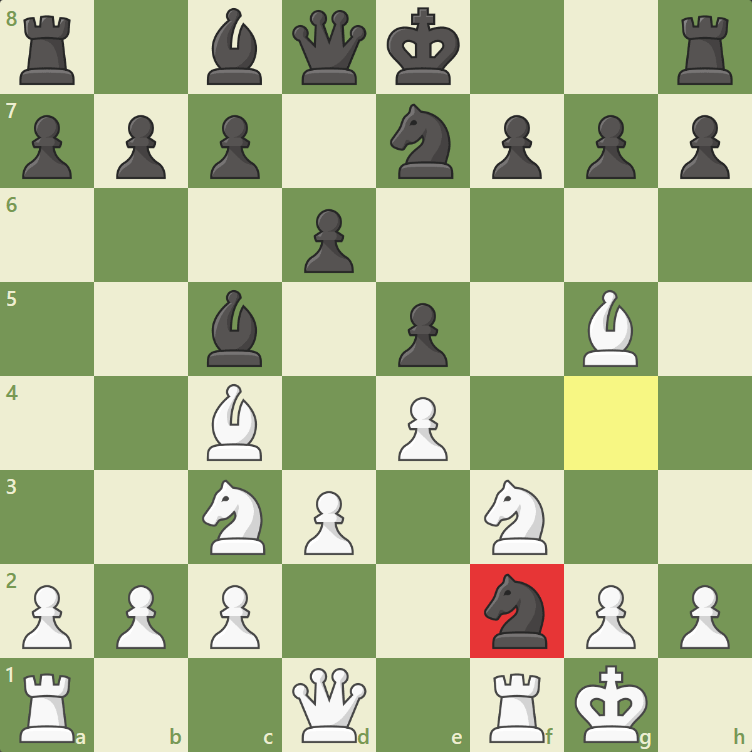
In general, two minor pieces are more valuable than a rook and a pawn. In the diagram below, we can see the position that occurs after the exchanges on f2: White's two minor pieces are more active than Black's rook and pawn.
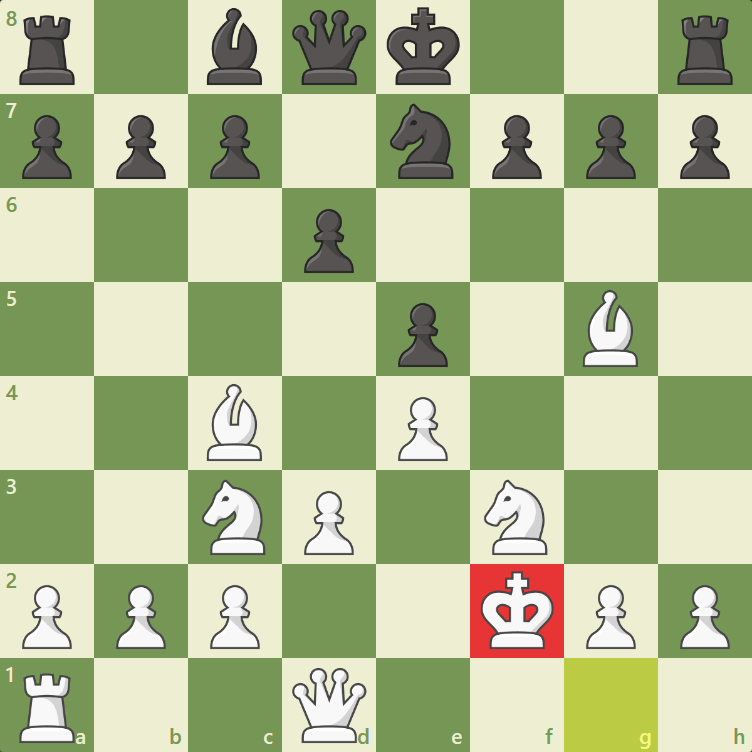
Most of the time, simple math can help us determine what exchanges we should pursue and which exchanges we should avoid. Let's try a test! In the following position, Black has just played Rh6. Should White capture the rook on h6 with their dark-squared bishop on c1?
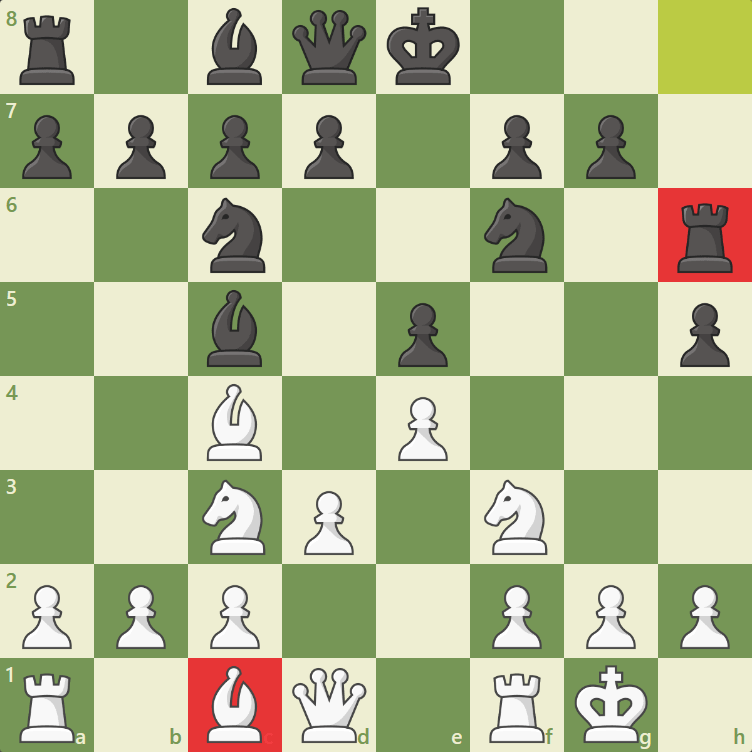
Yes! White should capture the rook on h6 with the bishop on c1 because the rook is worth five points while the bishop is worth 3 points. Let's try another one! In the following position, should the White queen capture the rook on the e8-square?
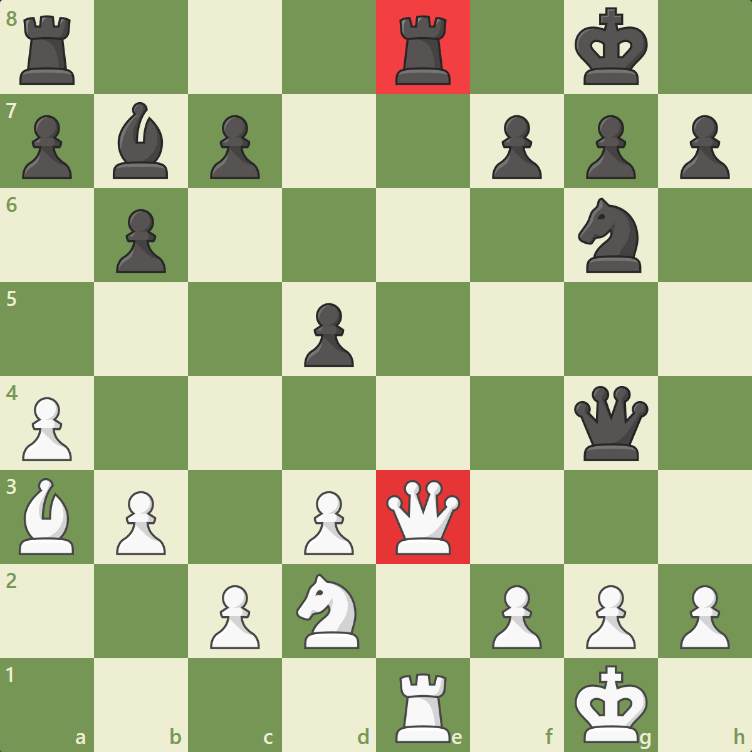
Yes, White should capture the rook on e8! The point is that White is getting two rooks for the queen (ten points for nine points), but more importantly because Black's king is in great danger and checkmate will soon follow on the eighth rank. Here is the position after Black captures the queen and White recaptures on e8:
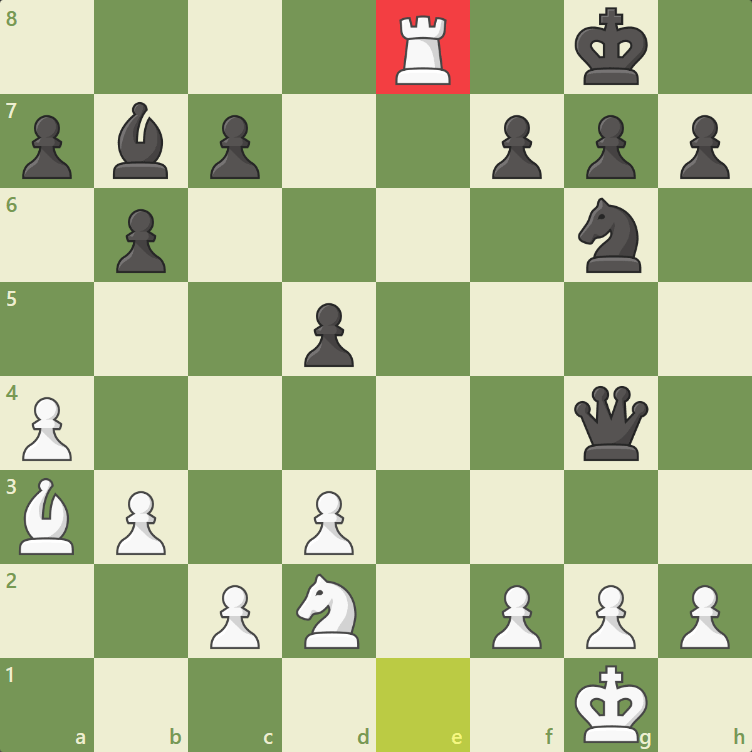
Conclusion
You now know what chess piece values mean, what their relative values are, how engine evaluations are tied to chess piece values, and how to evaluate exchanges. Enjoy this new information as you implement it on the chessboard!







